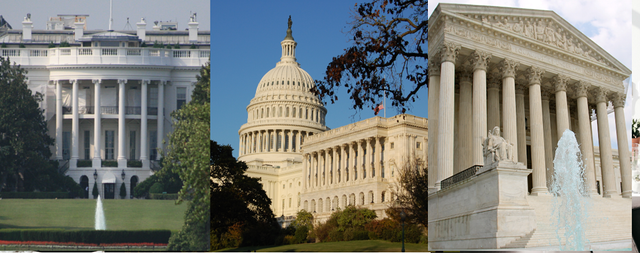By Hassan Shokouhi nasab
The eighth round of the talks in Vienna aimed at lifting sanctions on Iran can be considered the longest, the most complex, and, at the same time, the most sensitive political talks this year. In the meantime, positive signals have also been transmitted from the Austrian capital, showing steps forward, which may be slow, but advancing contrary to those in recent years.
One of these signals is the recent US move to restore Iran’s sanctions waivers on technical nuclear areas. On January 21, the US State Department informed Congress that in order to facilitate the negotiations process, it had suspended some sanctions against the civilian sector of Iran’s nuclear program to allow the two sides to return to their commitments under the Joint Comprehensive Plan of Action (JCPOA).
Although some described the US measure as a mere show in line with the interests of the sanctioning country rather than those of Iran, it is only part of the articles of the jigsaw puzzle agreed in Vienna that has been reflected in the media.
From the observers’ point of view, the United States is pursuing both overt and covert objectives from this issue, ranging from reassuring its regional allies about the peaceful nature of Iran’s nuclear activities during the post-agreement atmosphere and soothing fears of Iran’s nuclear breakout time to deliver a response to domestic rifts in Congress as well as tensions between the White House and the Republicans.
Behind-the-scenes goals of the dual use of “nuclear breakout” and “time constraints”
The issue of “nuclear breakout,” i.e. the time needed for enrichment to produce an atomic bomb, has always been praised by the West and its Hebrew-Arab allies. The anti-Iranian axis uses the issue as leverage to put pressure on Tehran and build a consensus against the Islamic Republic.
They are pursuing their “Iranophobia” project by showing that Iran’s nuclear breakout time is near; This is while the country is not seeking to develop and use atomic bombs based on a fatwa (religious decree) by Leader of the Islamic Revolution Ayatollah Seyyed Ali Khamenei. Mohammad Eslami, head of the Atomic Energy Organization of Iran (AEOI), has also said that the country does not go beyond 60% uranium enrichment. Moreover, from the observers’ point of view, the benefits that Iran derives from “reaching the threshold” far outweigh those of its “nuclearization.”
Regardless of Iran’s official position, however, the Western media, from The Wall Street Journal to Axios, are trying to portray Iran’s nuclear breakout time as very near. The Wall Street Journal claims that this time is now less than a year and possibly reduced to six months, and Axios alleges that the time required for Tehran to produce an atomic bomb is a maximum of four to six months.
From the start of the eighth round of the Vienna talks until today, the element of “time” has been used as a tool to exert pressure on Iran and reduce Tehran’s maximum demands. A look at the repeated positions of White House press secretary Jen Psaki and US Secretary of State Antony Blinken, and the unanimity of diplomats from the European trio regarding insufficient time reveal the portrayal of a state of emergency; A situation in which Iran is far from rational and deliberate decisions and trapped in excitement. However, as the eighth round of the Vienna talks lengthens, it can be understood that the Iranian team has prioritized achieving the desired result overreaching a swift unfavorable agreement.
Now, at the last minute of the Vienna talks, when some news indicates the drafting of an agreement, US senators, disguised as opponents, came to the help of the White House in order to lower Tehran’s expectations. The summoning of US Special Envoy for Iran Rober Malley to a secret meeting with members of Congress, as well as the letter of 33 Republican Senators addressed to President Joe Biden, can be assessed to that aim.
READ ALSO: Lebanese security forces detain journalist on charge of espionage for Israel
Even if we assume that the dispute between Congress and the White House is not fabricated, the outcome of the tension is a temporary agreement; The deal, which Iran has opposed so far, but according to Russian Foreign Minister Sergei Lavrov, there is still a long way to go before the 2015 Iran nuclear deal can be revived.
It should be noted that in the JCPOA and subsequent UN Security Council Resolution 2231, temporary restrictions were considered for Tehran. In addition to the 15-year limit on Iran’s nuclear activities, the resolution included a five- and an eight-year ban on Iran’s arms and missile activities, which are called “sunset clauses.”
The arms embargo expired last year, and we will see the lifting of the restrictions on Iran’s missile program in the near future. This is one of the concerns of the West and its regional allies. So far, they have made endeavors to make the embargoes permanent, but they went nowhere.
The empty place of the Parliament (Majlis), which previously helped reduce the West’s acts of sabotage by approving the plan of “proportionate, reciprocal action of the Iranian government in the implementation of the JCPOA” is felt, but Tehran has used other means of leverage at the current critical time.
The firm positions of Iran’s Supreme National Security Council, as well as the increasing defense-military capability, such as the unveiling of the strategic missile dubbed Khaybar Shekan, can be analyzed in this regard.
Therefore, it is expected, by looking through realistic lenses and understanding the current situation, the West will stop making fictitious deadlines and playing the “nuclear breakout” and other worn-out fruitless games. It is also expected that Iran, as an influential player in the region and beyond, will agree to a win-win deal with reciprocal and balanced obligations and rights.
Hassan Shokouhi nasab is an international relations expert.













